MIA Laboratories 409 Opto Compressor Handleiding
MIA Laboratories
Audiosoftware
409 Opto Compressor
Bekijk gratis de handleiding van MIA Laboratories 409 Opto Compressor (18 pagina’s), behorend tot de categorie Audiosoftware. Deze gids werd als nuttig beoordeeld door 44 mensen en kreeg gemiddeld 4.7 sterren uit 22.5 reviews. Heb je een vraag over MIA Laboratories 409 Opto Compressor of wil je andere gebruikers van dit product iets vragen? Stel een vraag
Pagina 1/18

409 OPTO COMPRESSOR
User Guide
MIA LABORATORIES © 2020

Greetings and Welcome!
Thank you for choosing MIA Laboratories.
Overview
The 409 is a powerful and versatile plugin with highly optimised dynamic response, based on the design and principles of analog Opto
Compressors. Characterised by its natural and musical gain reduction, the 409 provides from gentle, transparent compression - to heavy
deep-cutting limiting, suitable for a very wide range of applications.
Like its predecessor 925 Compressor, the 409 Opto Compressor is developed using physical modelling principles recreating classic Optical-element
compression characteristics, with a host of extra controls and features.
The main controls enable easy and precise tuning of compression response, with Attack and Release ranges up to 200ms and 787ms respectively.
In contrast to fixed-value switch ‘presets’, the Ratio is controlled by a continuously adjustable dial allowing accurate and ‘tunable’ setting of the
compression slope.
Complementing its dynamic process, an additional carefully selected set of features allows the user to unveil this unit’s true power.
Sidechain filtering & monitor, Dry/Wet Mix, Peak/RMS detection, Stereo Link, Lookahead, and the specially developed new parameters ‘Damping’
and ‘Skew’ which allow for smoothing and fine-tuning of the detector response, - these controls are what make the 409 truly versatile providing the
user with exceptional control and shaping of the signal’s envelope.
2
Key design features include:
● Highly optimised dynamic response
● ‘Damping’ and ‘Skew’ controls
● Feed-back type compressor/limiter topology
● Continuously adjustable Ratio control
● +Panel with extra features

Control Functions
Attack / Release
The key to great-sounding compression has always been careful adjustment and setting of the “Attack” and “Release” times.
They define how soon Gain Reduction is applied (Attack) or removed (Release) after the signal crosses the Threshold level, and allow the
compression process to follow, or ‘home-in’ on the envelope or rhythmic content of the program material. Alternatively, narrow transients (eg. short
percussive sounds), can instead be aimed-at by shorter time-constant settings, - or even a slow ‘Fader gain-ride’ on loud sections in a main-mix, by
very long Release settings.
Figure 1 shows how the onset of compression changes as the Attack value is decreased, applying more gain reduction and in a shorter time to the
signal.
At or near-zero Attack time, it is possible that the waveform itself is detected instead of the program’s envelope, especially low frequency audio (eg.
bass, synth, kick) with long sustained bass notes. This can be a powerful and useful process, but at the same time is the reason most of us give a
small nudge up to the Attack and Release knobs almost automatically as a first starting point - before even making any other adjustments.
In-line with this, but also for the practical and easier setting of the 409’s Attack and Release controls, both dial values initialize to ‘1’ allowing further
lowering down to ‘0’ as needed. Maximum setting ‘10’ on dial provides 200ms Attack and 787ms Release times, minimum setting ‘0’ provides 0ms
and 25ms respectively. - As with all other controls, the actual parameter values appear in a rectangle graphic during adjustment .
In Figure 2 the dynamic response can be seen, with higher Release settings taking increasingly longer time to recover from the previously applied
gain-reduction. Generally there are many ‘correct’ and desirable values depending on the context and source material at hand, and the ear’s final
perceived judgement. Long Release times in combination with higher Threshold settings can significantly raise the average level of a buss or main
mix, with that ‘impartial’ feeling and higher perceived loudness overall. On recorded instruments and drums, slowly lowering the Release control
down to zero will reveal a soundscape of ‘snappy’, ambient character compression, which tightly follows the input.
Finally, the nominal level of the incoming audio will also play a big part in the dynamic process, as no amount of compression/limiting or make-up
gain can actually make-up for poor resolution, or excessively low recorded waveforms. The 409 Opto is purposefully and carefully optimised to
provide a wide range of musical/quality compression, while making full use of the headroom and available dynamic range. *Note, it is very important
to ensure sufficient overall level of the recorded audio, where the process is focused and much more gain reduction can be applied. Lowering the
Attack control will also make the detector more sensitive, allowing more gain reduction to be applied.
3
Product specificaties
| Merk: | MIA Laboratories |
| Categorie: | Audiosoftware |
| Model: | 409 Opto Compressor |
Heb je hulp nodig?
Als je hulp nodig hebt met MIA Laboratories 409 Opto Compressor stel dan hieronder een vraag en andere gebruikers zullen je antwoorden
Handleiding Audiosoftware MIA Laboratories

10 December 2024
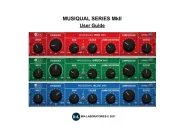
10 December 2024
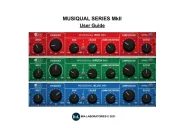
10 December 2024

10 December 2024

4 Maart 2024

4 Maart 2024

4 Maart 2024

4 Maart 2024

4 Maart 2024

4 Maart 2024
Handleiding Audiosoftware
- IK Multimedia
- Wave Arts
- Xils Lab
- Magix
- Playfair Audio
- CEDAR
- Audio Ease
- Antares
- Best Service
- MixVibes
- Avid
- Modalics
- Air
- Blue Cat Audio
- Nugen Audio
Nieuwste handleidingen voor Audiosoftware
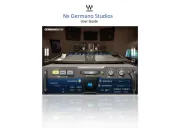
10 April 2025

8 April 2025

2 April 2025

2 April 2025

2 April 2025
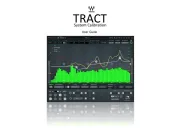
2 April 2025

2 April 2025
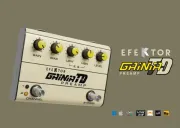
2 April 2025
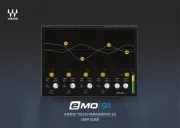
2 April 2025
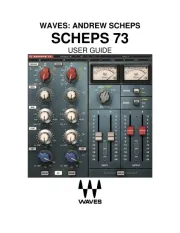
2 April 2025